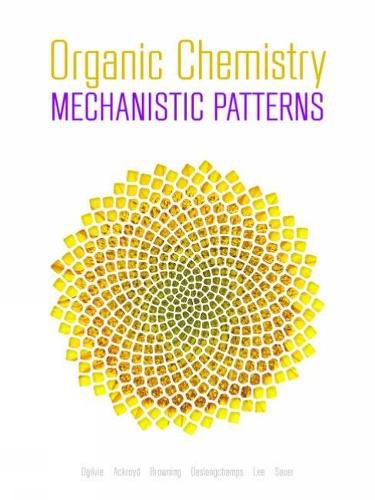Readings Newsletter
Become a Readings Member to make your shopping experience even easier.
Sign in or sign up for free!
You’re not far away from qualifying for FREE standard shipping within Australia
You’ve qualified for FREE standard shipping within Australia
The cart is loading…






Organic Chemistry: Mechanistic Patterns is the very first introductory organic chemistry title that holistically focuses on a mechanistic approach; an approach that has proven to achieve a deeper understanding of chemical reactivity. This mechanistic approach to the dynamic world of organic chemistry visualizes reactivity as a collection of patterns in electron movement, making it possible for students to describe why a reaction occurred.
Recognizing patterns of electron flow between seemingly different reactions can allow students to predict how a chemical will react, even if they have never seen a particular reaction before. The text takes great care to establish a progression of reactivity, from simple to complex, introducing functional groups as necessary, while focusing on the reaction at hand rather than the various things that each functional group does.
To help students further visualize key concepts, the text includes Ghislain Deslongchamps’ acclaimed Organic ChemWare; interactive animations and simulations that bring static textbook molecular representations to life.
Together, we seek to open students’ eyes to the dynamic world of organic chemistry with a more powerful and systematic approach to learning.
$9.00 standard shipping within Australia
FREE standard shipping within Australia for orders over $100.00
Express & International shipping calculated at checkout
Organic Chemistry: Mechanistic Patterns is the very first introductory organic chemistry title that holistically focuses on a mechanistic approach; an approach that has proven to achieve a deeper understanding of chemical reactivity. This mechanistic approach to the dynamic world of organic chemistry visualizes reactivity as a collection of patterns in electron movement, making it possible for students to describe why a reaction occurred.
Recognizing patterns of electron flow between seemingly different reactions can allow students to predict how a chemical will react, even if they have never seen a particular reaction before. The text takes great care to establish a progression of reactivity, from simple to complex, introducing functional groups as necessary, while focusing on the reaction at hand rather than the various things that each functional group does.
To help students further visualize key concepts, the text includes Ghislain Deslongchamps’ acclaimed Organic ChemWare; interactive animations and simulations that bring static textbook molecular representations to life.
Together, we seek to open students’ eyes to the dynamic world of organic chemistry with a more powerful and systematic approach to learning.